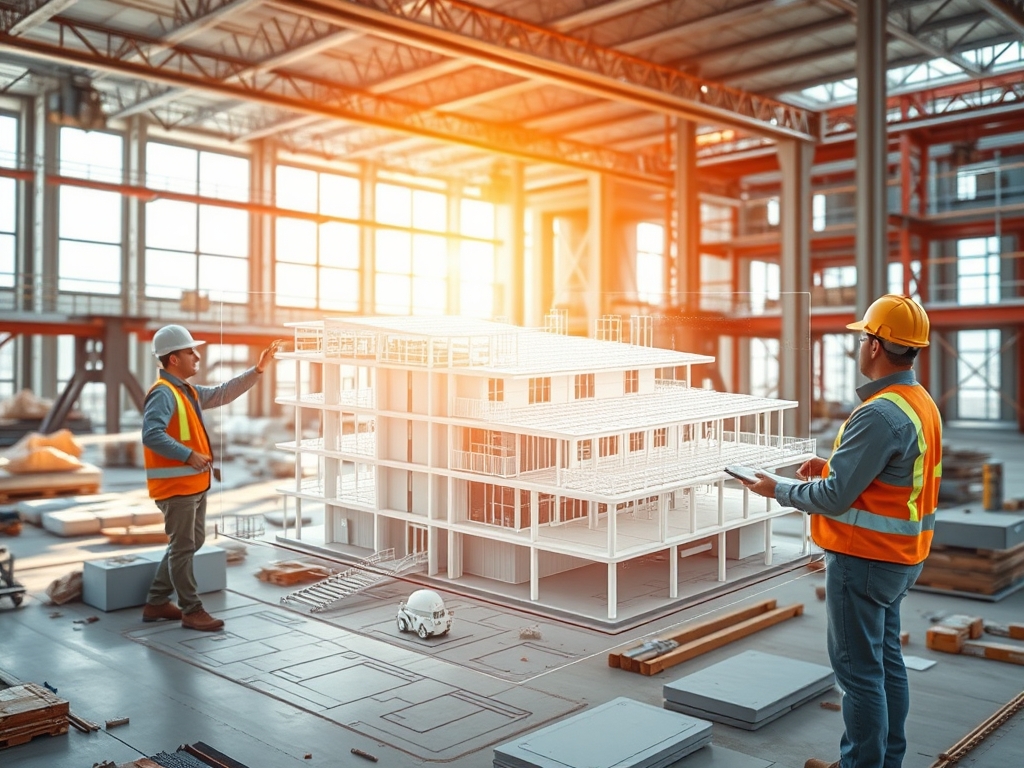From Concept to Reality: Using 3D Visualization to Validate Construction Feasibility

The act of construction is a delicate dance between ambition and reality. A striking concept on paper can crumble under the weight of practical limitations: structural conflicts, logistical challenges, or unforeseen costs. But what if you could test your vision against reality before the first shovel hits the ground? 3D visualization makes this possible.
More than just a design tool, 3D visualization is a compass, guiding architects, engineers, and stakeholders through the complexities of construction feasibility. This isn’t just about pretty pictures; it’s about building smarter, faster, and more confidently.
Seeing the Unseen: The Power of 3D Visualization
A construction site is a symphony of moving parts—teams, materials, timelines—all working in tandem to bring a vision to life. Yet, in this chaos, even small miscalculations can cascade into significant delays or costs. 3D visualization offers clarity amidst this complexity by allowing teams to:
- Spot Design Conflicts Early: Detect clashes between structural elements, mechanical systems, or finishes before they become on-site problems.
- Simulate Logistics: Visualize how cranes, trucks, and workers will navigate tight spaces or busy urban environments.
- Test Scenarios: Experiment with different construction methods, materials, or sequences to find the most efficient approach.
Example: In a large hospital project, 3D visualization revealed that HVAC ductwork would interfere with the structural steel layout. By identifying this conflict early, the team avoided costly redesigns and on-site delays.
A Collaborative Canvas
Construction isn’t a solo endeavor. Architects, engineers, contractors, and clients all bring their expertise—and their perspectives—to the table. 3D visualization acts as a shared language, ensuring everyone is aligned:
- Architects: Explore creative designs while understanding their structural implications.
- Engineers: Validate load-bearing structures and mechanical systems within the design framework.
- Contractors: Plan construction phases and anticipate challenges before breaking ground.
- Clients: Gain confidence in the project by seeing exactly what they’re investing in.
Real-World Application: A mixed-use development team used a 3D walkthrough to address stakeholder concerns about pedestrian traffic flow. By simulating movement patterns in real time, they redesigned access points to improve safety and usability.
Beyond Aesthetics: The Metrics of Feasibility
3D visualization isn’t just about making designs look good; it’s about making them work. By integrating real-world data and analytics, these tools provide actionable insights:
- Structural Integrity: Simulate stress tests to ensure the building can withstand environmental and operational loads.
- Cost Efficiency: Visualize how changes in materials or methods impact overall budgets.
- Environmental Impact: Assess energy usage, natural light distribution, and other sustainability factors within the design.
Insight: A city hall project used 3D visualization to analyze sunlight patterns. By adjusting window placements, they reduced HVAC energy consumption by 20%, aligning with green building certifications.
Bridging the Gap Between Planning and Execution
Plans often falter in the transition from design to construction. 3D visualization smooths this handoff by:
- Generating Detailed Models: Create accurate, construction-ready models that minimize interpretation errors.
- Enhancing Training: Use virtual models to train crews on complex installations or safety protocols.
- Tracking Progress: Compare the on-site build against the digital model to ensure adherence to design.
Case Study: During a stadium construction, the team used 3D models to coordinate steel truss installations. Virtual rehearsals reduced installation time by 15%, saving weeks on the overall timeline.
The Future of Feasibility
As technology evolves, 3D visualization is becoming more immersive, accessible, and intelligent:
- Digital Twins: Real-time models that mirror construction sites, enabling live monitoring and adjustments.
- AI Integration: Predict potential challenges using machine learning algorithms trained on past projects.
- Web-Based Platforms: Democratize access to 3D models, allowing stakeholders to collaborate from anywhere.
Building Confidence, One Model at a Time
Construction is inherently uncertain, but uncertainty doesn’t have to be a barrier. With 3D visualization, you can move forward with confidence, knowing your concept has been tested, validated, and refined. It’s not just about visualizing the end result; it’s about understanding the journey to get there. From skyscrapers to schools, bridges to stadiums, 3D visualization is the bridge between concept and reality.